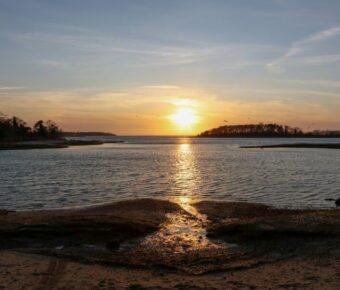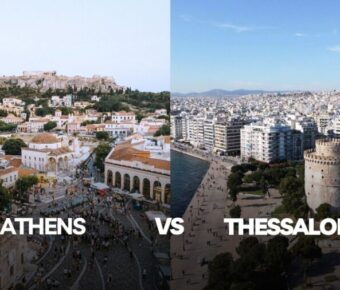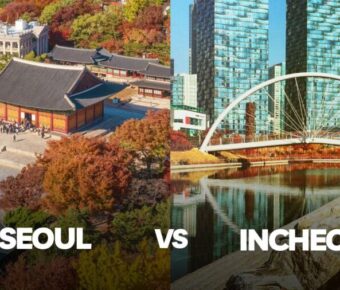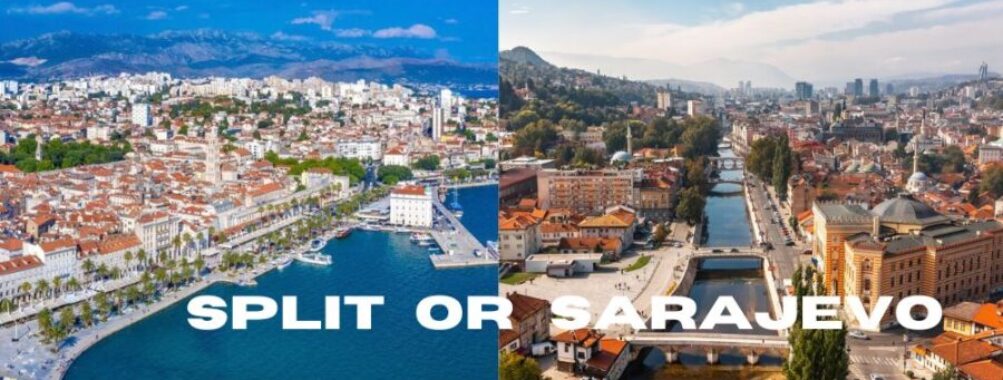
Split vs Sarajevo: Ultimate Balkan City Battle Between Coast and Culture 2025
Split and Sarajevo offer two completely different experiences for travelers exploring the Balkans. These historic cities showcase distinct cultures, with Split’s ancient Roman architecture and Mediterranean charm contrasting against Sarajevo’s Ottoman influences and East-meets-West atmosphere.
Split wins for beach lovers and those seeking coastal vibes, while Sarajevo stands out for its deep cultural heritage and more affordable prices. The Croatian coastal gem dazzles with its sunny weather and access to island-hopping adventures, getting over 200 hours of sunshine in spring.
Both cities tell fascinating stories through their streets and buildings. Split’s Diocletian’s Palace forms the heart of a bustling modern city, while Sarajevo’s blend of minarets and Habsburg architecture reflects its position at the crossroads of civilizations. The choice between them comes down to whether a traveler prefers seaside scenery or historic depth.
Contents
- Geographical Context and Connection
- Traveling Between Split and Sarajevo
- Side Trips to Montenegro and the Bay of Kotor
- Historical Significance and Architecture
- The Story of Diocletian’s Palace
- Sarajevo’s Vijećnica and Latin Bridge
- Cultural Highlights and Museums
- Baščaršija: Sarajevo’s Cultural Center
- Celebrating the Days of Diocletian
- Accommodation and Dining Experiences
- Choosing Your Stay in Split
- Dining in Sarajevo: A Blend of Cultures
- Outdoor Activities and Natural Attractions
- Beach Trips from Split
- Hiking Around Sarajevo
- Local Life and Shopping Opportunities
- Stroll Through Split’s Markets
- Sarajevo Shopping: From Baščaršija and Beyond
- Transportation and Accessibility
- Airport Transfers and Getting Around Split
- Navigating Sarajevo: Tips for Tourists
- Frequently Asked Questions
- What are the top attractions to visit in Sarajevo?
- Can you compare the cultural significance of Split and Sarajevo?
- What unique culinary experiences can tourists expect in Split and Sarajevo?
- How does the nightlife in Sarajevo differ from that in Split?
- What historical events have shaped the cityscape of Sarajevo?
- Are there any coastal activities available in Split that aren’t found in Sarajevo?
- More Travel Guides
Geographical Context and Connection
Split and Sarajevo sit in different corners of the Balkans, creating unique opportunities for travelers to explore this fascinating region. Their positions make them perfect bases for discovering hidden gems across multiple countries.
Traveling Between Split and Sarajevo
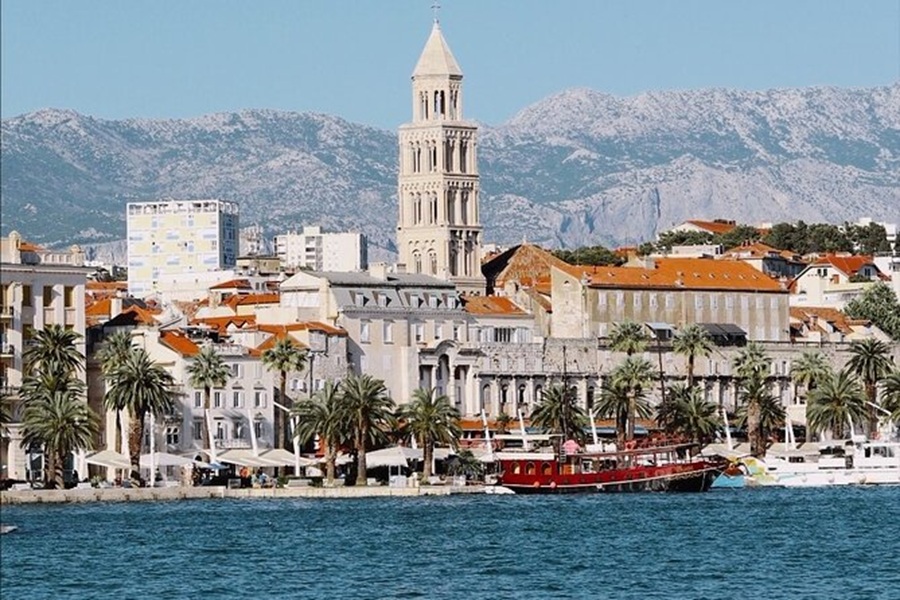
Split sits on Croatia‘s stunning Dalmatian coast, while Sarajevo nestles in a valley surrounded by mountains in Bosnia and Herzegovina. The distance between these cities spans roughly 250 kilometers by road.
Buses run daily between the cities, taking about 7 hours through mountain passes and coastal roads. The scenery along the route is spectacular, with pine forests and rocky peaks giving way to river valleys.
Train service isn’t available directly between these cities. Driving offers more flexibility, letting you stop at places like Mostar with its famous bridge.
Side Trips to Montenegro and the Bay of Kotor
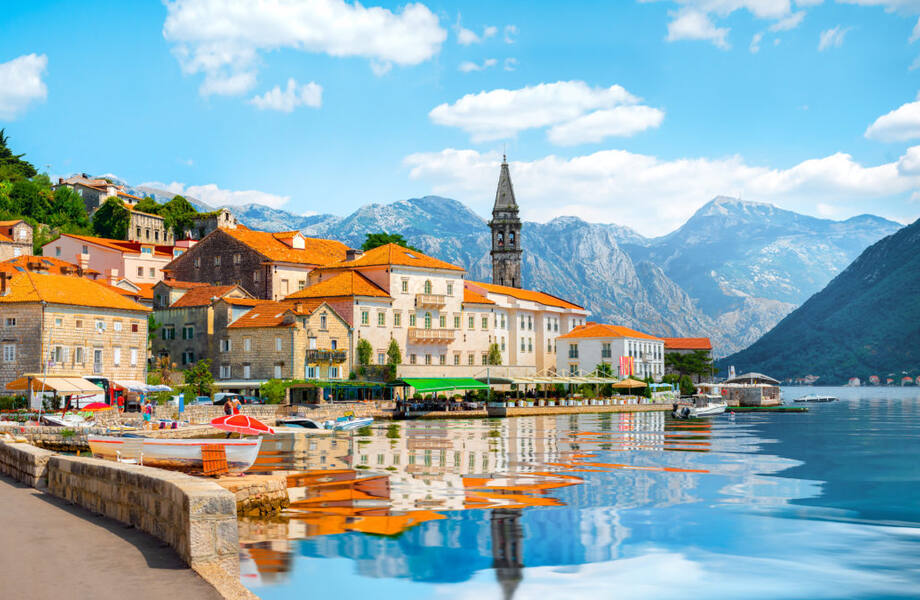
Montenegro’s Bay of Kotor makes an excellent addition when visiting Split or Sarajevo. From Split, you can reach Kotor in about 4.5 hours by car or bus. The journey winds along the coast past Dubrovnik.
The Bay of Kotor’s steep cliffs and medieval towns look like a Norwegian fjord transported to the Mediterranean. Small boats zip across the crystal-clear waters between ancient settlements.
You can book exciting day trips from either city to explore Montenegro’s highlights. Many tours include stops at Budva’s beaches and Kotor’s Old Town.
The winding mountain road from Kotor to Sarajevo takes about 6 hours, offering views of Montenegro’s rugged interior along the way.
Historical Significance and Architecture
Both Split and Sarajevo showcase incredible architectural treasures that tell fascinating stories of their past. These cities blend different cultural influences into their unique urban landscapes.
The Story of Diocletian’s Palace
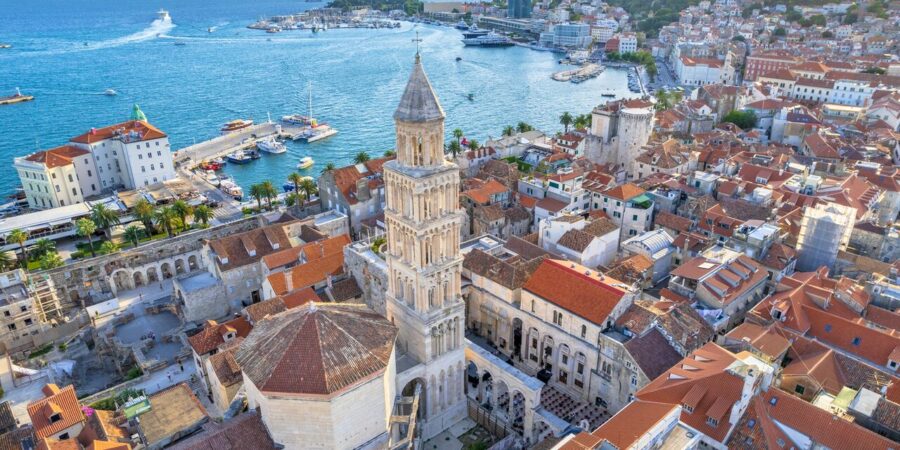
Diocletian’s Palace stands as Split’s crown jewel, built in the 4th century AD as a retirement home for the Roman Emperor Diocletian. This massive complex covers 30,000 square meters in the heart of Split’s Old Town.
The palace mixes Roman, Gothic, and Renaissance styles. Its walls contain shops, homes, and cafes where people still live and work today – making it a living monument rather than just ruins.
The palace features four main parts:
- North Gate (Golden Gate)
- South Gate (Bronze Gate)
- East Gate (Silver Gate)
- West Gate (Iron Gate)
The central peristyle serves as the main square, surrounded by ancient columns and sphinx statues brought from Egypt.
Sarajevo’s Vijećnica and Latin Bridge
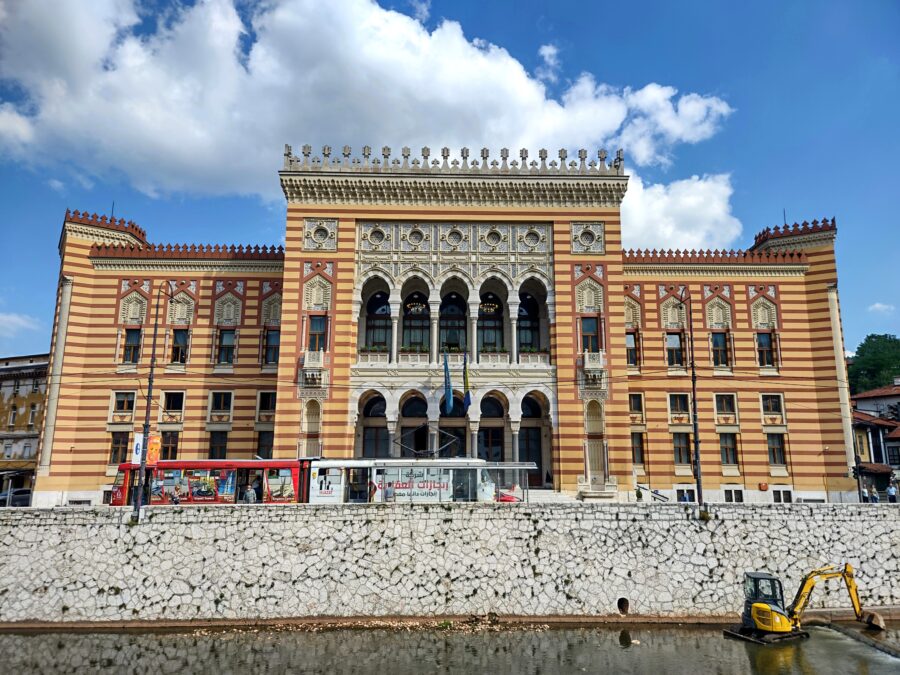
The stunning Vijećnica (City Hall) represents Sarajevo’s most beautiful Austro-Hungarian building. Built in 1896, it shows off a unique Pseudo-Moorish style with striped walls and pointed arches.
During the 1992-1995 siege, the building burned down along with many precious books. It reopened in 2014 after extensive restoration work.
The Latin Bridge gained worldwide fame as the site where Archduke Franz Ferdinand was assassinated in 1914, triggering World War I. This Ottoman-style stone bridge dates to the 16th century.
The area around these landmarks mixes architectural styles from:
- Ottoman Empire
- Austro-Hungarian period
- Socialist era
- Modern times
Cultural Highlights and Museums
Split and Sarajevo each offer distinct cultural experiences that showcase their rich histories through festivals, architecture, and preserved traditions. These cities maintain their unique identities while embracing modern cultural movements.
Baščaršija: Sarajevo’s Cultural Center
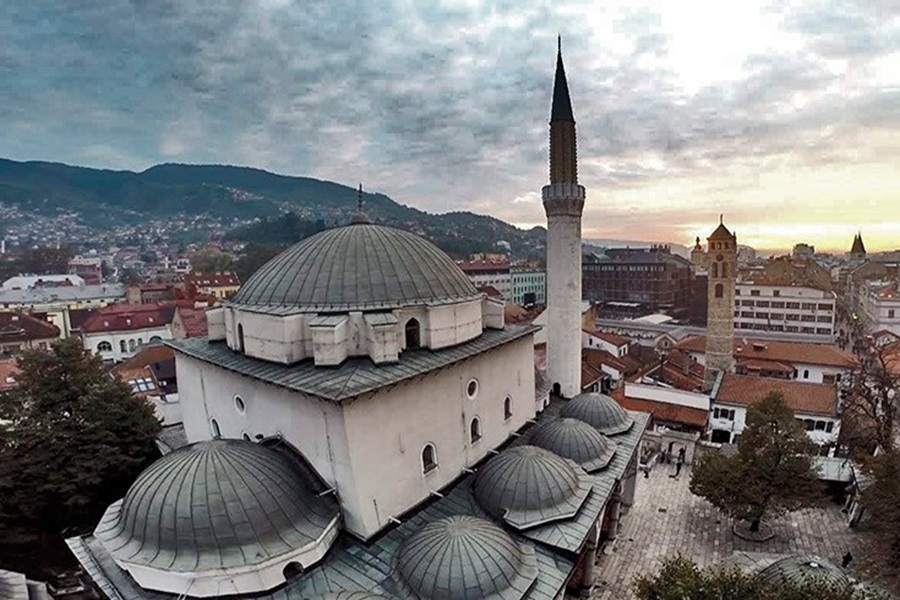
The heart of Sarajevo beats in Baščaršija, a 15th-century bazaar where copper artisans still hammer traditional coffee sets by hand. The iconic Gazi Husrev-beg Mosque stands as the center’s architectural jewel, with its intricate Islamic calligraphy and peaceful courtyard.
Small shops line the narrow cobblestone streets, selling handmade crafts and traditional Bosnian coffee. The aroma of ćevapi and freshly baked somun bread fills the air.
Gallery 11/07/95 provides a moving glimpse into Sarajevo’s recent history. The gallery’s black-and-white photographs tell powerful stories of the city’s resilience during the 1990s siege.
Celebrating the Days of Diocletian
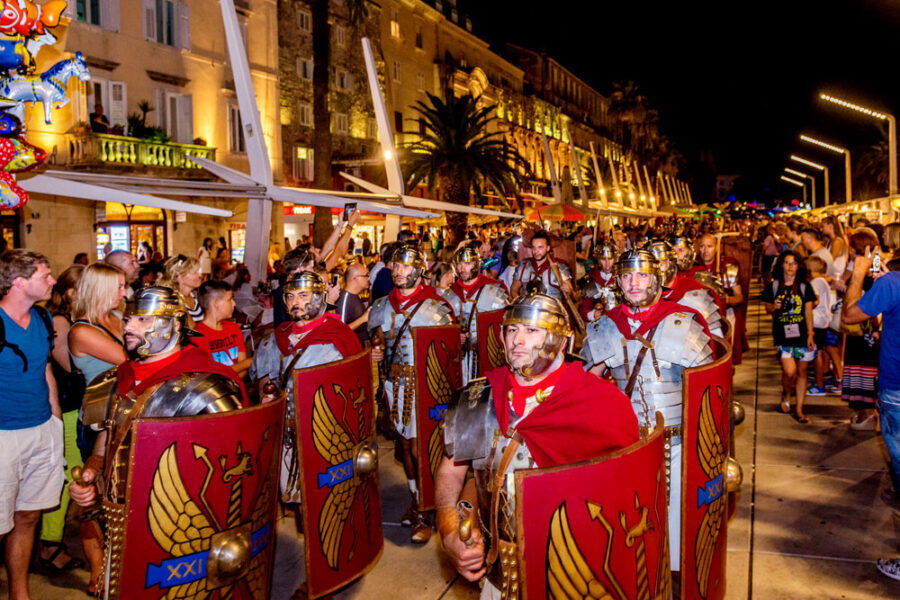
Split transforms into a living museum during the Days of Diocletian Festival. Local residents dress in Roman togas and tunics, bringing history to life in the ancient palace walls.
Guards march through limestone streets while musicians play traditional Dalmatian songs. Food vendors serve authentic Roman-era dishes based on ancient recipes.
The festival includes gladiator fights in the palace’s peristyle, engaging both kids and adults in interactive history lessons. Visitors can join craft workshops to learn ancient Roman techniques for making mosaics and pottery.
Accommodation and Dining Experiences
Split and Sarajevo offer distinct lodging choices and food scenes that reflect their unique cultural identities and local traditions.
Choosing Your Stay in Split
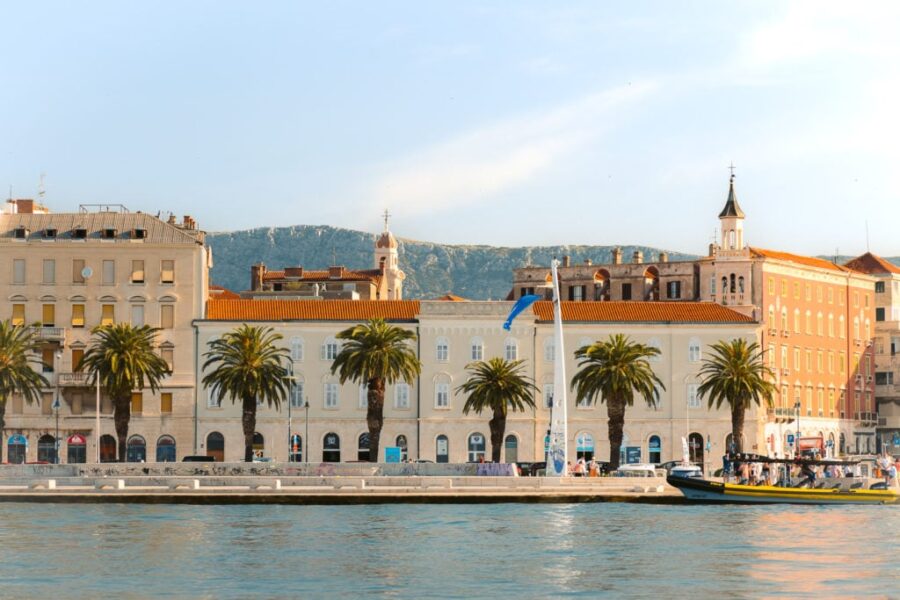
Split’s accommodation options span from luxury waterfront hotels to cozy guesthouses in the ancient stone buildings. The city’s most sought-after stays sit within Diocletian’s Palace walls, where guests can sleep in rooms built into 1,700-year-old Roman architecture.
The Riva promenade area features upscale hotels with stunning harbor views. Budget travelers will find plenty of clean, comfortable apartments in the Varoš and Bačvice neighborhoods.
Many properties offer special touches like rooftop terraces or traditional Dalmatian stone balconies. Prices tend to spike during peak summer months between June and August.
Dining in Sarajevo: A Blend of Cultures
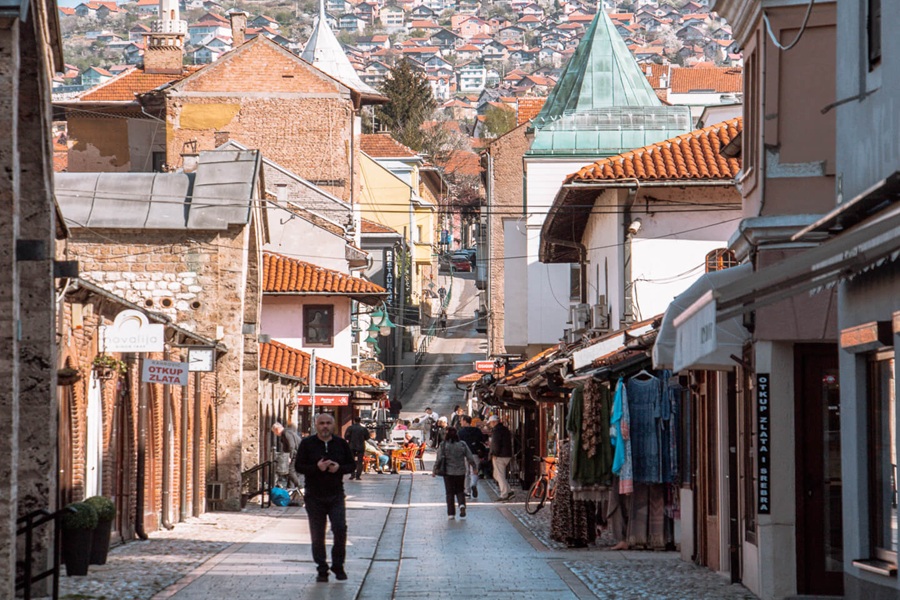
Sarajevo’s food scene mixes Turkish, Balkan, and Central European flavors. The historic Baščaršija district serves as the heart of traditional dining, with countless small restaurants called aščinice offering classic Bosnian dishes.
Must-try local specialties include:
- Ćevapi (grilled meat fingers in flatbread)
- Burek (flaky pastry with meat or cheese)
- Bosanski lonac (hearty meat and vegetable stew)
The Ferhadija and Titova streets showcase modern cafes and international restaurants. Small family-run establishments often provide the most authentic dining experiences at reasonable prices.
Many restaurants maintain their traditional cooking methods, using clay pots and wood-fired ovens passed down through generations.
Outdoor Activities and Natural Attractions
Both cities offer unique outdoor experiences with stunning natural landscapes. Split welcomes visitors with beautiful beaches and crystal-clear waters, while Sarajevo sits nestled among majestic mountains perfect for hiking adventures.
Beach Trips from Split

Split’s coastline features some of Croatia’s most beautiful beaches. Bačvice Beach, right in the city center, has shallow waters and soft sand that makes it perfect for families. The clear blue waters invite swimming and snorkeling.
Marjan Hill park provides access to several hidden coves and peaceful beaches. Kasjuni Beach and Bene Beach offer shade from pine trees and amazing sunset views across the Adriatic Sea.
Many visitors take boat trips to nearby islands for even better beaches. Brač Island’s Zlatni Rat Beach changes shape with the tides and wind, creating a unique swimming spot with perfect conditions for windsurfing.
Hiking Around Sarajevo

Sarajevo’s mountains create an outdoor playground for hikers and nature lovers. The Trebević Mountain offers well-marked trails with views over the entire city. Cable cars take visitors to the starting points of several hiking paths.
Mount Jahorina, a former Winter Olympics venue, has hiking trails for all skill levels. Summer visitors can explore wildflower meadows and dense forests while enjoying fresh mountain air.
The trails near Skakavac Waterfall lead through untouched nature to Bosnia’s highest waterfall. The 98-meter cascade creates a cooling mist that’s especially refreshing during summer hikes.
Local Life and Shopping Opportunities
Both Split and Sarajevo offer unique shopping experiences that reflect their distinct cultures and histories. Each city’s marketplaces tell stories through local crafts, foods, and daily life.
Stroll Through Split’s Markets
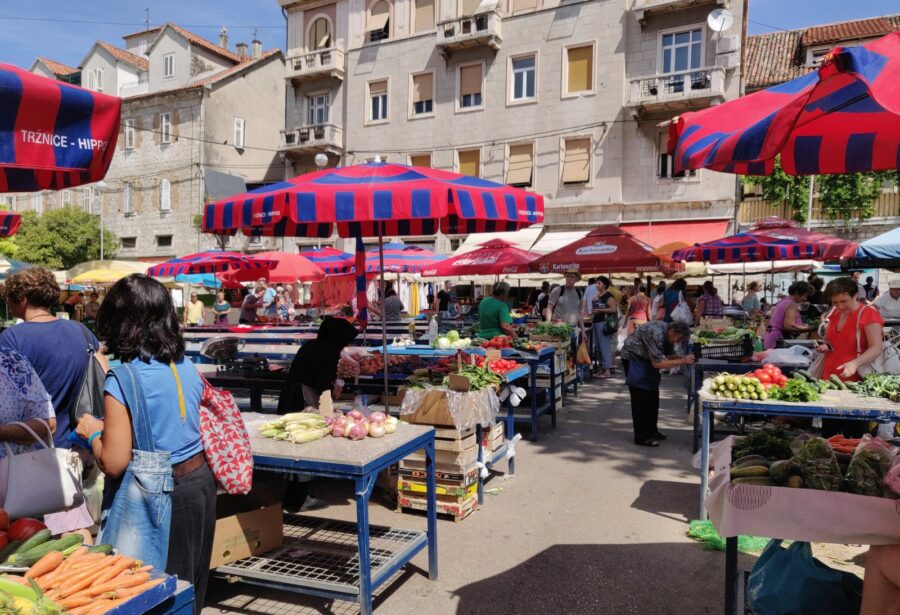
The Green Market (Pazar) sits next to Diocletian’s Palace walls, bringing fresh produce from local farmers each morning. The stands burst with seasonal fruits, veggies, and Croatian specialties like dried figs and lavender.
The fish market (Peskarija) gives you a peek into daily Croatian coastal life. Local fishermen sell their morning catch in this historic spot that’s been running since 1890.
Split’s modern shopping scene centers around Marmontova Street. This pedestrian zone features boutiques, jewelry shops, and Croatian design stores perfect for finding unique gifts.
Sarajevo Shopping: From Baščaršija and Beyond
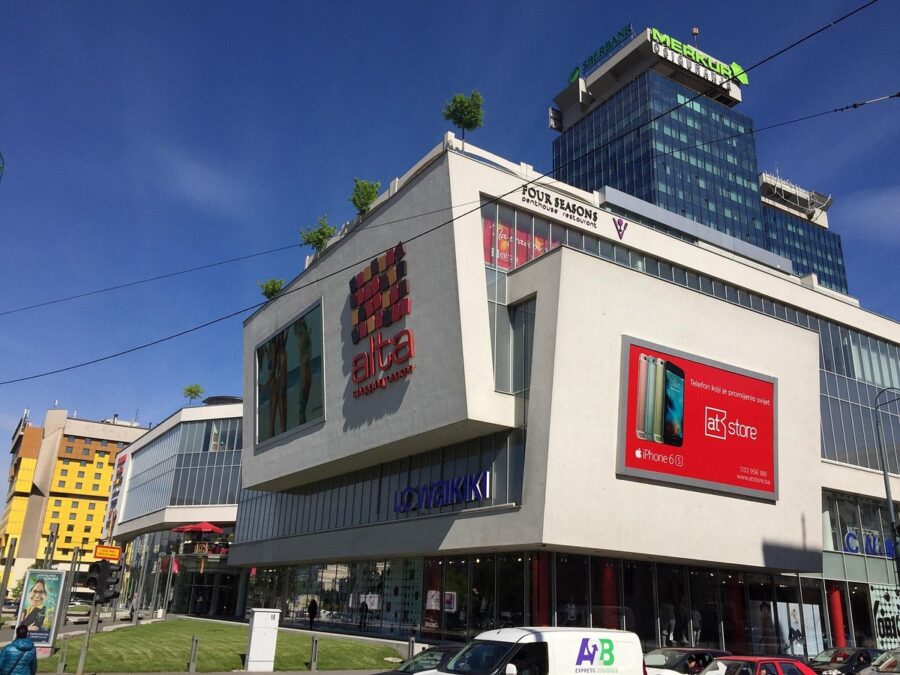
Baščaršija stands as the heart of Sarajevo’s shopping district. This Ottoman-era bazaar fills narrow cobblestone streets with metalwork shops, where craftsmen still make traditional copper coffee sets and decorative plates.
The market’s čaršija (covered marketplace) buzzes with locals buying everything from handwoven rugs to traditional Bosnian coffee. You’ll find authentic souvenirs like carved wooden boxes and colorful glass lamps.
BBI Centar and Alta Shopping Center bring modern retail to Sarajevo. These malls mix international brands with local designers, giving shoppers a taste of contemporary Bosnian style.
Transportation and Accessibility
Split and Sarajevo offer distinct transportation experiences for visitors, with Split providing more streamlined tourist-friendly options while Sarajevo maintains its authentic charm with a mix of modern and traditional transit choices.
Airport Transfers and Getting Around Split
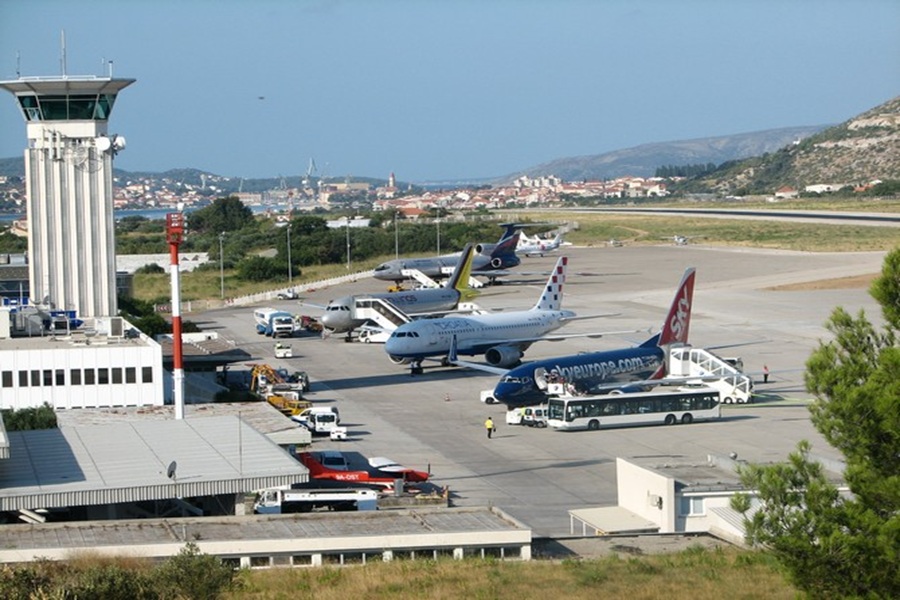
Split’s airport sits 24 km from the city center, with regular shuttle buses running every 30 minutes. The ride takes about 40 minutes and costs €4.
Getting around Split is simple with its well-organized bus network. A single ticket costs €1.50, while daily passes are €4.
The historic center is compact and walkable. Most tourist spots are within 15-20 minutes on foot from the main areas.
Taxis are plentiful and use meters. A typical ride within the city costs €5-10. Many drivers accept credit cards.
Book transportation tickets in advance during peak season to avoid long waits.
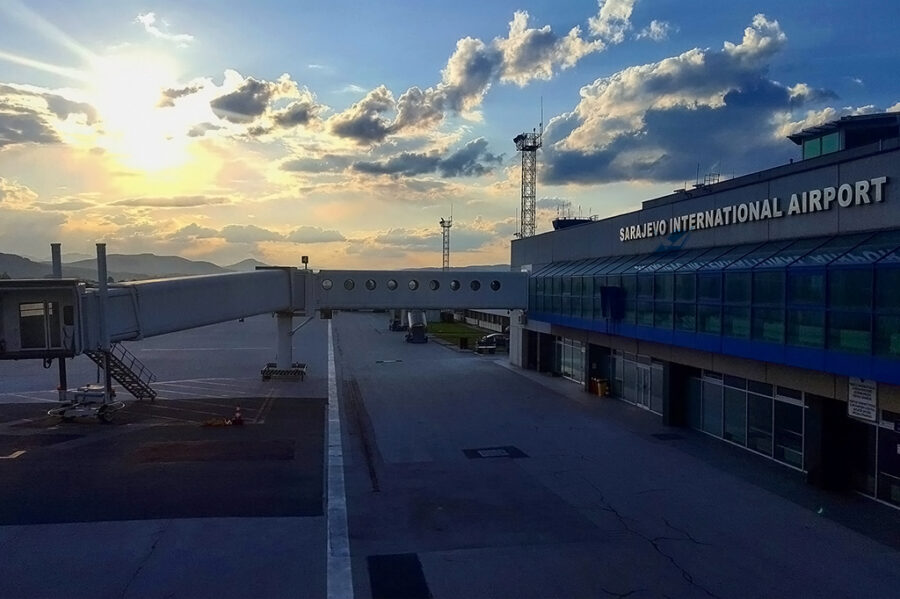
Sarajevo International Airport connects to the city via taxi or bus. You can take a taxi to the city in 20-25 minutes, and it will cost around €15.
The city’s tram system dates back to Austro-Hungarian times and remains a key transit option. A single ride on the tram costs €0.90.
Public buses complement the trams and reach areas outside the center. You can buy a daily pass for both systems for €5.
Walking is ideal in the old town (Baščaršija), where streets are narrow and shops are close together.
You can find flight prices to Sarajevo, which vary seasonally, with better deals in spring and fall.
Frequently Asked Questions
Split and Sarajevo each offer distinct cultural experiences shaped by their unique histories, locations, and traditions. Their attractions, cuisine, and activities vary greatly due to their different geographic settings.
What are the top attractions to visit in Sarajevo?
The Baščaršija old bazaar stands as Sarajevo’s heart, filled with copper workshops and traditional crafts. The Latin Bridge marks the spot where Archduke Franz Ferdinand was assassinated in 1914.
The Gazi Husrev-beg Mosque showcases Ottoman architecture at its finest. It was built in the 16th century and remains the largest historical mosque in Bosnia and Herzegovina.
The Sarajevo Tunnel Museum tells the story of survival during the city’s siege. Visitors can walk through a section of the actual tunnel that served as a lifeline during the 1990s conflict.
Can you compare the cultural significance of Split and Sarajevo?
Split embraces Roman heritage through Diocletian’s Palace and Mediterranean influences. The city blends ancient Roman architecture with modern Croatian coastal life.
Sarajevo represents a meeting point of Eastern and Western cultures. Its architecture reflects Ottoman, Austro-Hungarian, and Yugoslav periods, earning it the nickname “Jerusalem of Europe.”
What unique culinary experiences can tourists expect in Split and Sarajevo?
Split’s cuisine centers on fresh seafood, olive oil, and Mediterranean herbs. Local specialties include black risotto, grilled fish, and pašticada with gnocchi.
Sarajevo’s food scene features Bosnian classics like ćevapi, burek, and traditional coffee. The Baščaršija area serves authentic dishes in historic settings.
How does the nightlife in Sarajevo differ from that in Split?
Split’s nightlife thrives along the waterfront and beach clubs. Bars and clubs stay open late during summer, with many venues offering live music and DJ sets.
Sarajevo’s evening scene focuses on cafes, bars, and rakija lounges. Local bands play traditional sevdah music in cozy venues across the old town.
What historical events have shaped the cityscape of Sarajevo?
The Ottoman Empire left lasting marks on Sarajevo’s architecture and culture. Turkish-style buildings and mosques dot the cityscape.
The 1990s siege changed parts of the city dramatically. Some buildings still show war damage, while others have been restored to their former glory.
Are there any coastal activities available in Split that aren’t found in Sarajevo?
In Split, you can swim, sail, and hop between islands. Beaches like Bačvice host picigin, a unique local water sport.
You can also enjoy kayaking, diving, and snorkeling along Split’s coast. The nearby islands of Hvar and Brač make perfect day trips.

